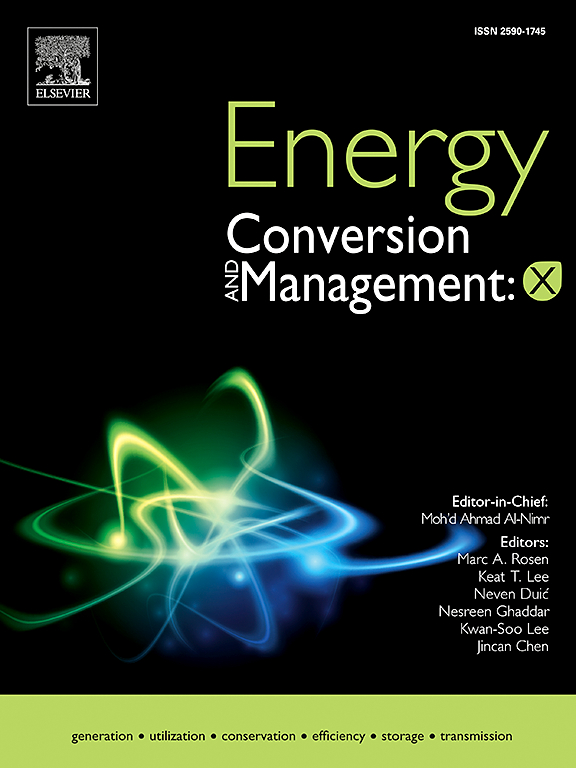碳纳米管在柴油发动机中的技术可行性分析:对稳定性、燃烧性能和排放的影响
IF 9.9
1区 工程技术
Q1 ENERGY & FUELS
引用次数: 0
摘要
一些研究报告了使用分散在传统柴油燃料中的各种纳米材料的好处。然而,与纳米材料沉积、燃料过滤器堵塞以及由于未燃烧的纳米燃料可能增加颗粒排放有关的重要限制尚未得到适当解决。在这项研究中,碳纳米管(CNTs)分散在50、100和150 mg/L浓度的柴油中,并用十二烷基苯磺酸钠(SDBS)稳定。分散稳定性结果表明,当CNTs浓度为100 mg/L时,沉淀最低。然而,即使有这样合适的含量,由于纳米材料的保留,发动机燃油滤清器后碳纳米管的浓度也下降了96%。然后,为了评估纳米燃料对柴油发动机排放的影响,去除燃料滤清器进行发动机测试。这些测试使用全球统一轻型车辆测试周期(WLTC)进行,测量一氧化碳(CO)、氮氧化物(NOx)、未燃烧碳氢化合物(HC)和颗粒物。使用纳米燃料时,HC和NOx的排放量与柴油相当。然而,观测到CO排放量显著增加了约34%。此外,颗粒物质增加,可能是由于未反应的纳米管以及CNTs粘附在预先存在的PM颗粒上,导致形成更大的颗粒或作为成核位点。这些发现引起了人们的极大关注,并为在柴油发动机中加入稳定的sds碳纳米管提出了相当大的挑战。本文章由计算机程序翻译,如有差异,请以英文原文为准。
Technical feasibility analysis of carbon nanotubes in diesel engines: Effects on stability, combustion properties and emissions
Several studies have reported benefits when using various nanomaterials dispersed in conventional diesel fuel. However, important constraints related to nanomaterial sedimentation, fuel filter blockage and a possible increase in particles emission because of unburnt nanofuels, have not been yet properly addressed. In this study, carbon nanotubes (CNTs) were dispersed in diesel fuel at 50, 100, and 150 mg/L concentrations, and stabilized with sodium dodecylbenzene sulfonate (SDBS). The dispersion stability results indicate that a concentration of 100 mg/L of CNTs presented the lowest sedimentation. However, even with such appropriate content, the concentration of CNTs decreased by 96 % after the engine fuel filter because of nanomaterial retention. Then, in order to assess the impact of nanofuel on diesel engine emissions, the fuel filter was removed for the engine tests. These tests were conducted using the Worldwide Harmonized Light Vehicle Test Cycle (WLTC), with measurements taken for carbon monoxide (CO), nitrogen oxides (NOx), unburned hydrocarbons (HC), and particulate matter. The emission of HC and NOx when using nanofuel were found to be comparable to those of diesel fuel. However, a notable increase of approximately 34 % in CO emissions was observed. Furthermore, there was an increase in particulate matter, likely attributed to the unreacted nanotubes as well as to the adherence of CNTs to pre-existing PM particles, leading to the formation of larger particles or serving as nucleation sites. These findings give rise to significant concerns and present considerable challenges for the incorporation of SDBS-stabilized CNTs in diesel engine applications.
求助全文
通过发布文献求助,成功后即可免费获取论文全文。
去求助
来源期刊

Energy Conversion and Management
工程技术-力学
CiteScore
19.00
自引率
11.50%
发文量
1304
审稿时长
17 days
期刊介绍:
The journal Energy Conversion and Management provides a forum for publishing original contributions and comprehensive technical review articles of interdisciplinary and original research on all important energy topics.
The topics considered include energy generation, utilization, conversion, storage, transmission, conservation, management and sustainability. These topics typically involve various types of energy such as mechanical, thermal, nuclear, chemical, electromagnetic, magnetic and electric. These energy types cover all known energy resources, including renewable resources (e.g., solar, bio, hydro, wind, geothermal and ocean energy), fossil fuels and nuclear resources.
 求助内容:
求助内容: 应助结果提醒方式:
应助结果提醒方式:


